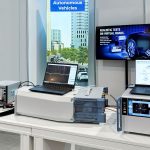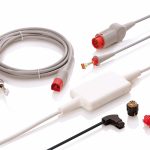The growing number of extreme weather events around the world has cast a bright light on the importance of protecting key systems in communication networks, like radio towers, broadband sites, small cell applications and the headend communication infrastructure that supports downstream networks. These sites all have one major growing pain driven by the need for faster speeds and data bandwidth.
Wireless communication has become an integral part of our lives. Each day, millions of people and billions of devices are connected to a radio tower. Total global mobile data traffic is expected to grow 300% by the end of 2028 to reach 472 EB per month, according to Ericsson. Municipalities, private businesses, healthcare providers and emergency services rely on wireless communication to function properly and serve their communities – and the towers distributing wireless signals are a vital part of private and public communications networks.
To meet the growing demand of data-hungry consumers, today’s telecommunications operators are investing heavily in the latest high-bandwidth technology. This next-generation equipment is more compact and integrates multiple pieces of previously used site equipment into a single unit with broader capabilities and greater processing capacity, which makes the equipment more vulnerable to lightning strikes and other surge events. These high-tech solutions are invaluable parts of communications infrastructure and must be equipped with cutting-edge surge protection devices (SPDs). This ensures uptime and a way to protect your communication system investments while providing users with an experience that creates loyalty with an uninterrupted, data-rich service.
Furthermore, the equipment being installed to keep up with these growing numbers is more sophisticated, which comes with a higher price tag. This means safeguarding these investments from transient surge events is critical to any network design. The other consideration is the cost to maintain, repair or replace damaged equipment, and the labor cost required to get customers back online. Tower climbs, troubleshooting sites and equipment replacement are areas where businesses can reduce costs by utilizing SPDs to eliminate one major variable facing the network.
Protecting communication networks
We hear from customers every day that surges are a prime concern when it comes to protecting their networks, as they are notorious for degrading, damaging, or destroying microprocessor-based electronics and interrupting, delaying and corrupting signal transmissions. Surges can compromise communications equipment in different ways. A nearby lightning event can induce transients onto the signal and power transmission lines or energize the earth around the equipment. Another common occurrence is a direct strike to equipment located on the site.
Due to the combination of increased reliance on wireless communication and the rising risk of severe weather events, I find that engineers are paying more attention to SPDs and how this relatively inexpensive – yet critical – piece of equipment can better safeguard communication networks. Engineers are searching for robust and reliable solutions, especially for sensitive communications systems in areas with high exposure to lightning storms.
Having worked with operators and manufacturers around the world for the past five decades, our surge protection experts at Transtector and PolyPhaser, both Infinite Electronics brands, recommend focusing on key areas when searching for SPD solutions: reliability, performance and ease of installation.
Reliability: The reliability of the SPDs safeguarding your radio and related equipment is paramount. SPDs must be able to withstand huge swings in voltage without failing to protect your hardware. It is also important that when these SPDs see transient events, they can divert a surge event away from the equipment of concern and reset quickly to protect from the next event. Lightning events are not a single event – each strike can have 12 to 20 events in a microsecond timeframe, which makes robust and repetitive surge protection critical to your sensitive equipment.
Performance: The performance of SPDs directly impacts the longevity of both the devices themselves and the equipment they protect. Surge capacity, voltage protection levels and sacrifice modes are all important performance criteria to consider when evaluating SPDs. That performance level is critical for a wide variety of applications, including cellular networks, distributed antenna systems, emergency response, public safety systems and citizens broadband radio services.
We also recommend that engineers closely review test results. Ask for data on performance testing, UL listing and NEC/local code compliance.
Ease of installation: The importance of easy installation cannot be understated. It is an area engineers often overlook because they are hyper-focused on reliability and performance. Installing surge protection incorrectly without properly grounding the device or connecting it to a site with bad grounding can impede the effectiveness and performance of an SPD. Quick, straightforward installation procedures make it easier to replace SPDs when sites are exposed to lightning or other extreme surge events.
Other things to look for when selecting SPDs include technical support (to help size products correctly to customer applications) and manufacturers with solutions to support the ever-changing communication architecture.
Surge protection best practices
It is impossible to prevent lightning, but when speaking with customers I always suggest they take simple steps to minimize the potential for damage and downtime due to a strike. As a former applications engineer, here are seven best practices I recommend to help prevent damage to sensitive communication systems that could be caused by lightning and other power surge sources1.
- Confirm the correct installation. Protection starts with proper installation. SPDs should be installed on both ends of Ethernet and DC power cables going up a tower to a radio. Surge energy that couples with a cable will travel in both directions to find a path to the ground, and it will enter any unprotected equipment on the line. During my time in the field, this is something I noticed is often overlooked. By installing SPDs at both ends of a cable, you’re able to mitigate that risk. Consider protecting all paths and equipment from AC, data, RF and DC applications with surge protection. This saves on costs by eliminating the need for replacement equipment as well as the labor associated with replacing damaged equipment, while also keeping your end customers happy and connected.
- Ensure the ground connection is present. An SPD requires a ground connection to divert the surge energy away from the radio. Poor grounding is the most common reason for radio failure even with surge protection installed. An SPD can be rendered ineffective by no ground connection, a high-impedance ground connection or an improperly installed grounding system.
- Repetitive surge capabilities are a must. For specific applications, select SPDs that can withstand repetitive surges without degrading. For these applications use SPDs with silicon avalanche suppression diode (SASD) circuits. This type of component does not degrade or cause thermal runaway conditions and has one of the lowest VPLs to provide the highest level of protection for communication equipment.
- SPDs should sacrifice themselves. Under extreme surge events, SPDs should sacrifice themselves to protect the communication equipment. SPD components like MOVs can fail very violently and will damage everything around them. Standalone SPDs are designed to fail safely in their enclosure and contain a violent failure. This is a critical reason to consider standalone surge protection versus integrating surge components on a board or directly into your radios or communication equipment. The ideal way to protect equipment is to eliminate the transient before it enters your equipment and system.
- Properly apply DC power SPDs. DC surge protection on both (+) to ground and (−) to ground are critical. The addition of protection across the + to – (line to line) provides an added level of safety for grounded DC systems.
- Get GPS synchronization insurance. Despite the increased utilization of fiber, coaxial radio deployments still play a critical role in broadband communication infrastructure. GPS systems are critical to the time synchronization of today’s networks. The GPS antennas are often at a high elevation connected to the network with a conductive coaxial cable that requires a unique approach to surge protection. The use of maintenance-free inductor-based DC-pass RF protection is highly recommended for GPS antenna installations.
- Ensure proper AC power protection. A lot of time is spent making sure the proper protection for radios is used while often overlooking one of the most common paths for surge energy. The main AC power feed at a site is directly connected to an aging utility grid that provides a wide-open path for high-level surge events. Proper protection on the main AC power source at a communication site is highly recommended.
In today’s increasingly connected world, communication networks have become indispensable to our daily lives, but they are not immune to the forces of mother nature. By following these tips and best practices, network engineers and site managers can be confident they have the right SPDs protecting their communication sites – and have the peace of mind that the systems will function properly when their customers need them the most.
By Jason Koshy, VP Global Sales at Infinite Electronics










